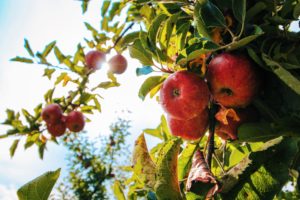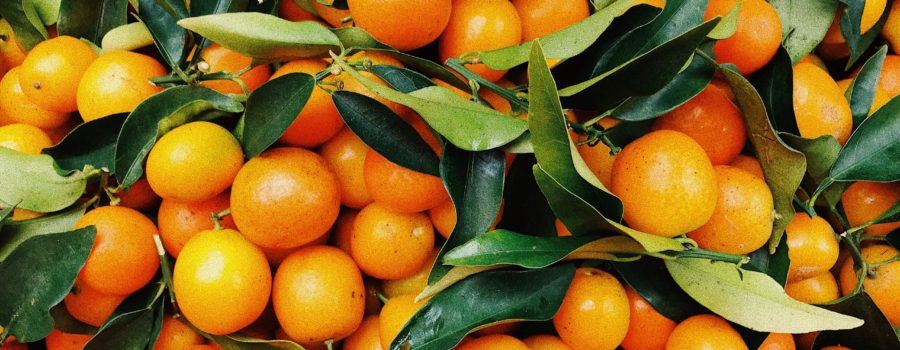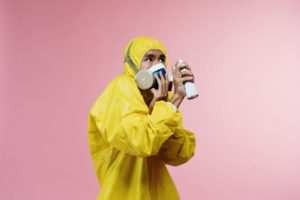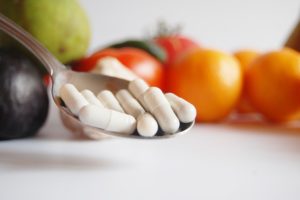Fungicides on Fruits
Fungicides on fruits is something we need to be aware of. We know about pesticides, but especially for conventionally-grown fruit, fungicides are a different set of chemicals used mostly post-harvest.
After the pandemic started, right before eating them, I washed many fruits with soap and hot water, such as apples, oranges and other citrus, pears, peaches, kiwi, and so on. I did the same with many vegetables (cucumbers, tomatoes, peppers, avocados).
Anything that has a skin (that can eventually be peeled), was washed thoroughly this way, and placed afterwards in a baking soda solution, to remove pesticide residues. Of course, these techniques don’t apply to berries, salad greens, fresh herbs—you get the idea.
Until this pandemic I was just using warm running water. The point I’m trying to make is that I had no clue how important was to wash fruits with hot water. This method didn’t just help avoid the eventual Covid-19 droplets, but removed some toxic chemical fungicides.
 Under more controlled conditions and with fungicide treatment (preharvest and pre-storage), they can last up to 1 year.
Under more controlled conditions and with fungicide treatment (preharvest and pre-storage), they can last up to 1 year.Quite recently, I received an email from EWG warning about another toxic chemical, Imazalil (IMZ)—a fungicide used on non-organic citrus fruits. Each time I get info like this, I look for additional medical research to see what else has been published about the same issue.
There are two types of fungicides used on fruits (citrus mostly, but also apples and probably others), and vegetables, sometimes before but mostly after harvesting, to prevent damage.
Thiabendazol is another one, but probably not used as much nowadays compared to IMZ. The advantage would be that thiabendazole gets off the fruit if washed with hot water and/or soap or dish detergent, while IMZ doesn’t.
Peeling an orange or tangerine without washing it first, allows our fingers to get contaminated as we peel it. Afterwards, as we enjoy a healthy fruit, we eat a “fair share” of anti-fungal along with it. 
So even when washing it properly, only one third of IMZ gets removed. Ultrasonic bath was used in another experiment, and that only removed half. Really? We need all this ultrasonic bath technology to be able to eat a clean piece of fruit?!
Moreover, IMZ penetrates the peel and is found in the citrus pulp too. That’s another reason why it cannot be completely removed from citrus fruits. It penetrates the apples peel as well—as another study found.
I always thought that pesticides don’t just remain on the peel. Since they’re used a few times on the same crops, the fruit and vegetables probably grow with these incorporated into them, from the flower buds stages.
Pesticides and now fungicides, when applied right before and after harvesting, can only add up and are hard to remove even from the peel. What penetrates inside the fruits stays there.
EWG research the IMZ fungicide on fruits (specifically citrus fruit discussed), is cancer-linked. Does it have any other health consequences? Course it does, according to additional medical research (on animal models):
- alters the good bacteria; lately there is more and more research showing the friendly flora in our gut is responsible for our overall health and alterations can have damaging consequences
- can cause colonic inflammation, as noticed by invasion of inflammatory cells and mediators pointing to inflammation
If you read the EWG article, it’s stating that Canada and the E.U. are currently considering stricter restrictions for this cancer-linked chemical.  It will probably take much longer for the EPA to act on this. Until then, we have to protect ourselves.
It will probably take much longer for the EPA to act on this. Until then, we have to protect ourselves.
There is no reference about the organic varieties of citrus fruit in the EWG article. Probably these have less toxic fungicides or maybe none, I hope. I’ll wash them with hot water and place them in a baking soda bath for a little bit afterwards anyway.
Surely eating fruits is very important, but I didn’t think that all the beneficial polyphenols and antioxidants can counteract all these chemicals used on them. There is no way of knowing what pesticides and fungicides have been used on specific crops. Organic fruit is usually somewhat more expensive, but I prefer to eat one clean tangerine rather than two contaminated ones.
Pesticides and fungicides are two important classes of chemicals that contaminate our foods. There are way more food additives that we need to avoid. If you read this article, I’m sure you want to find out. Really simple, just click here for the FREE checklist.




